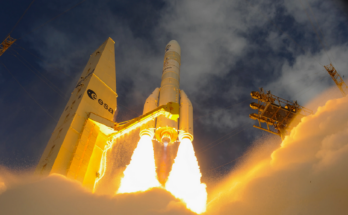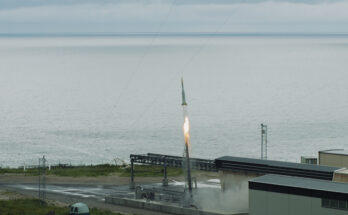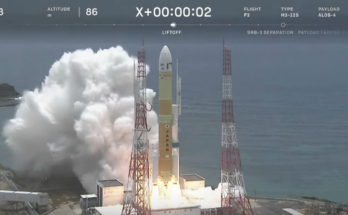China has launched one Beidou-3 navigation satellites into space aboard a Long March 3B (CZ-3B) launch vehicle. Liftoff occurred at 11:57 p.m. local time (3:57 p.m. UTC; 11:57 a.m. EDT) on November 1, 2018 from the Xichang Satellite Launch Center.
The geosynchronous satellite was the 41st in the Beidou constellation. It is also the first third generation satellite deployed to geosynchronous orbit. The satellite is based on CAST’s DFH-3B bus and had a launch mass of about 4,3600 kilograms.
All of the 16 other third generation satellites have been deployed to medium Earth orbit (MEO). Most navigation satellites are deployed to MEO; however, China maintains a handful of geosynchronous satellites to provide backward compatibility with earlier versions of Beidou. Geosynchronous Beidou satellites are also equipped with a messaging payload to support up to 10 million subscriber messages per hour.
China is rapidly launching Beidou satellites with a goal of achieving operational capability, supported by a fleet of 35 satellites, by 2020. The launch of the latest satellite, designated Beidou-3G1Q, is the 16th navigation satellite carried into orbit by China in 2018. China expects to begin offering navigation services over its own territory and other so-called “Belt-and-Road” countries by the end of this year.
The launch also represents the 32nd launch conducted by China this year. Beijing plans to conduct 35 launches in 2018. Another five launches will be conducted by commercial companies in China, bringing the national total up to 40. It’s not clear that China will achieve that ambitious goal. However, Beijing has already set a record for number of launches this year and will continue to launch at a rapid pace through the rest of the year.
A military history enthusiast, Richard began at Forecast International as editor of the World Weapons Weekly newsletter. As the Internet grew in importance as a research tool, he helped design the company's Forecast Intelligence Center and currently coordinates the EMarket Alert newsletters for clients. Richard also manages social media efforts, including two new blogs: Defense & Security Monitor, covering defense systems and international issues, and Flight Plan, which focuses on commercial aviation and space systems. For over 30 years, Richard has authored the Defense & Aerospace Companies, Volume I (North America) and Volume II (International) services. The two books provide detailed data on major aerospace and defense contractors. He also edits the International Contractors service, a database that tracks all the contractors involved in the programs covered in the FI library. More recently he was appointed Manager, Information Services Group (ISG), a new unit that encompasses developing outbound content for both Forecast International and Military Periscope.



